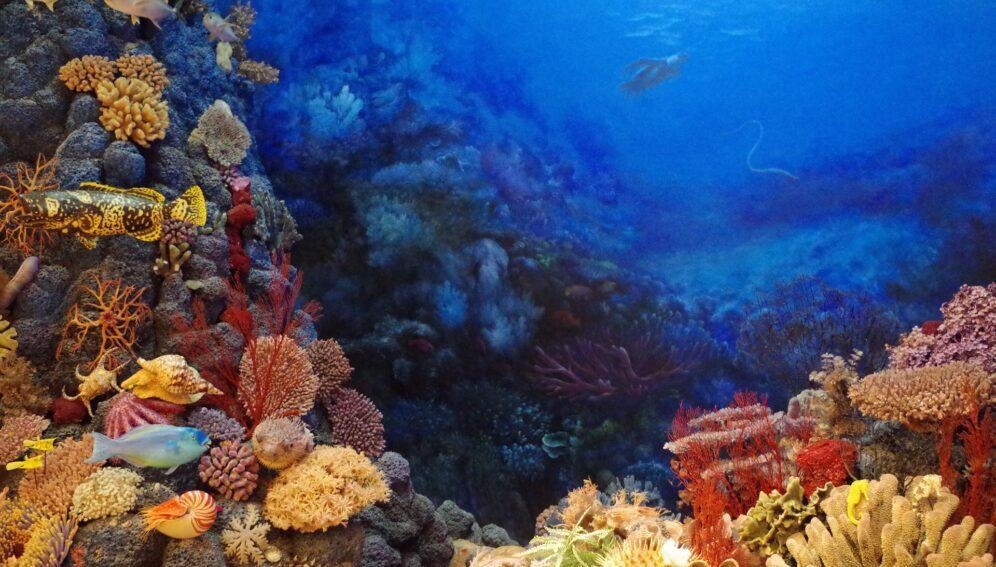A study highlights that an increase in global warming by 2°C could cause the loss of cool areas in the sea known as thermal refugia that protects coral reefs from increasing temperatures.
 A new study says that safe areas where corals can survive warming may vanish even if Paris climate goals are met. Image Credit: Copyright: wanzi989813 from Pixabay.
A new study says that safe areas where corals can survive warming may vanish even if Paris climate goals are met. Image Credit: Copyright: wanzi989813 from Pixabay.
In a few areas, local ocean dynamics such as upwelling and powerful currents were believed to cushion the effects of warming seas, but scientists warn that these thermal refugia could diminish as seas warm.
Coral reefs support a majority of marine biodiversity and approximately a billion people depend on them for their occupations and food security, says Adele Dixon, a researcher at the Priestley International Centre for Climate at the University of Leeds and lead author of the study, published this month in PLOS Climate.
The study estimates the value of goods and services from coral reefs at US$2.7 trillion annually.
As we lack the resources to protect coral reefs everywhere, we need to decide which reef areas to protect. Our team decided to identify areas least exposed to future climate change and which reefs have the greatest chance of survival.
Adele Dixon, Study Lead Author and Researcher, Priestley International Centre for Climate, University of Leeds
Dixon and the research team learned that approximately 85% of the world’s coral reefs are located in thermal refugia, but forecast a decline of less than 1% if temperatures increase 1.5°C more than the pre-industrial levels.
While small portions of thermal refugia may exist, mainly in the East Indian Ocean Sumatra-Java region, the probability of a total loss of coral reefs was high if temperatures increase by 2°C, Dixon stated.
Our research reinforces the stark reality that there is no safe limit of global warming for coral reefs. Following the COP26 [climate summit] in Glasgow, in which some progress was made towards the 1.5 degrees Celsius target, our finding shows that 1.5 degrees Celsius is still a substantial amount of warming for ecosystems on the frontline of climate change.
Adele Dixon, Study Lead Author and Researcher, Priestley International Centre for Climate, University of Leeds
She adds that the analysis emphasizes various effects in different regions. “At 1.5 degrees Celsius of warming, thermal refugia will disappear from all but 12 regions worldwide: Polynesia and the Coral Triangle in the western Pacific Ocean. Refugia will be lost from regions such as Oman, the Caribbean, Colombia, and Indonesia.”
At 1.5 degrees Celsius of warming, thermal refugia will disappear from all but 12 regions worldwide: Polynesia and the Coral Triangle in the western Pacific Ocean. Refugia will be lost from regions such as Oman, the Caribbean, Colombia, and Indonesia.
Adele Dixon, Study Lead Author and Researcher, Priestley International Centre for Climate, University of Leeds
Co-author and scientist with the Physics and Marine Geophysical Laboratory in the College of Science and Engineering, James Cook University, Australia, Scott Heron states, “Identifying refugia locations related to the greatest threat (heat stress causing coral bleaching and mortality) helps to locate priority areas for management.”
Given the rate at which corals have been ecologically affected has risen and is expected to speed up, and the number of people dependent upon coral reefs is increasing, Scott Heron suggests, “it is important to understand where climate change disturbances will occur. The broad scale of impacts points to the urgent need for significant action on the causes of climate change”.
Oceanographer Mark Eakin, states: “This study provides further support for the threat the climate crisis poses to coral reefs around the world. While numerous reefs have been safe from frequent, severe bleaching in the past, this study shows that at even the most optimistic Paris Agreement level of global warming very few of the world’s reefs will be spared.”
Tim McClanahan, a senior conservationist with the Wildlife Conservation Society involved in coral reef conservations, working out of Mombasa, Kenya, tells SciDev.Net that the study reveals there will be few reefs that undergo low chronic stress in the future.
“Chronic stress will become widespread, and corals will have to resist or adapt to chronic stress to survive. Future sanctuaries from chronic stress will, therefore, be less common,” says McClanahan.
He trusts sanctuaries that are resilient to or recover from chronic stress will still exist. There will be coral reef sanctuaries but fewer that avoid long-lasting heat exposure.
“Therefore, there is a need to evaluate where resistant and recovery sanctuaries are located to reduce the number of additional threats that these reefs experience, such as fishing and pollution,” he adds.
One subject not well covered in the study, McClanahan says, is the large variances in the sensitivity of corals to thermal stress.
Coral in the Coral Triangle, for example, have lower sensitivity to stress than those in the Indian Ocean and Caribbean…Some reefs are frequently exposed to stress and the corals there are adapted whereas others are not and, therefore, not adapted.
Tim McClanahan, Senior Conservationist, Wildlife Conservation Society
Journal Reference:
Dixon, A. M., et al. (2022) Future loss of local-scale thermal refugia in coral reef ecosystems. PLOS Climate. doi.org/10.1371/journal.pclm.0000004.